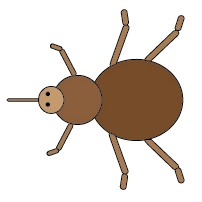
Scientists have begun introducing weevils from Louisiana into South Africa’s Crocodile River in hopes that the insects will be able to curb the effect of invasive water plants. The weevils have been effectively used in Puerto Rico to fight the same problem.
Salvinia minima is an invasive aquatic plant that has steadily been taking over freshwater bodies in the northern region of South Africa. This has caused a variety of issues, one of which being the suffocation of aquatic life, including on the Crocodile River and the Hartbeespoort Dam.
Hartbeespoort Dam is the location for the pilot project, it is an important source of irrigation for nearby farms and a popular recreation site. South Africa’s already vulnerable freshwater systems face a significant threat from salvinia, scientists say. The plants have had two major growth spurts in 2021 and 2022, surviving on the high nitrate contents in the water
The plants have taken over bodies of water in at least three northern provinces of South Africa and threaten to bleed into neighboring countries. Salvinia has a rapid growth rate, and its spread has been most notable across the Gauteng province, where South Africa’s biggest city of Johannesburg and its capital, Pretoria, are located. The plant is compounding existing water supply problems by depleting the oxygen and sapping the supply in a country that’s already struggling with increasing demand and deteriorating water infrastructure.
The weevils had been able to control the spread of salvinia previously in parts of the United States. Since then, scientists from both North and South America have collaborated on a project to gather a starter population of weevils to introduce to South Africa.
Once released at an infested site, the beetles begin eating the salvinia, without damaging the local ecosystem.
Julie Coetzee, the principal scientists at the South Africa Institute for Aquatic Biodiversity stated “They lay eggs on this plant, feed on this plant and die on this plant. If this plant dies, they will die as well. They damage certain tissues, those tissues become waterlogged and then those plants sink to the bottom.”



